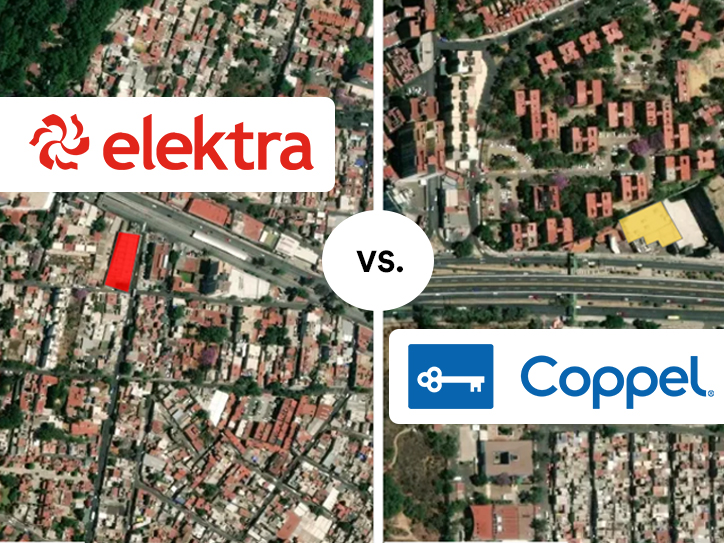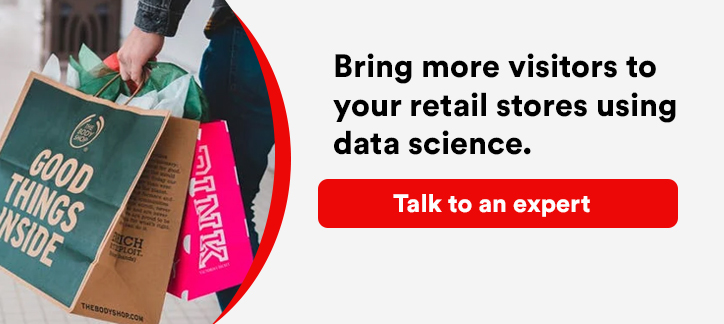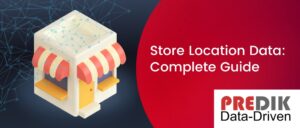Consumer preferences are constantly changing. From purchase behavior to new competitors, companies must pay attention to the conduct of their customers to identify new opportunities and possible threats.
This situation has become especially important for retail companies. According to recent studies, buyers are migrating to online platforms and becoming more omnichannel, increasing the challenges for retailers with physical stores.
Store managers must consider critical insights such as demographics, shopping habits, customer behavior, and visit volume. This information can help them offer a better user experience and attract more visits.
Mobility analytics is the best ally for brick and mortar stores
Nowadays, it’s not enough to have large amounts of information. It must be precise and provide a clearer picture for decision-makers. Mobility analytics is essential for retailers because it allows them to understand:
• Detailed consumer profile, as well as potential client understanding.
• Detailed competition insights.
• Improvement opportunities in current logistics.
• Interaction between different sales points (Example: Are my different stores cannibalizing each other?).
You may also like to read: Why is mobility & location data relevant for retail.
Case study: Comparing two biggest retail store chains in Latin America. Who gets more visits to their stores?
To understand the benefit of mobility analytics, we compared the visitors’ behavior of two of the largest and most important retail companies in Mexico and Latin America: Elektra and Coppel.
For this study, we randomly chose one store of each company relatively close to each other. We analyzed the visitors’ behavior during a five month period.
What will you see in this analysis?
• Intra-store behavior.
• Accessibility.
• Visits volume.
• Visitors’ interests.
• Conclusions of the analysis.
Intra-store behavior: What’s the visitors’ behavior inside my store?
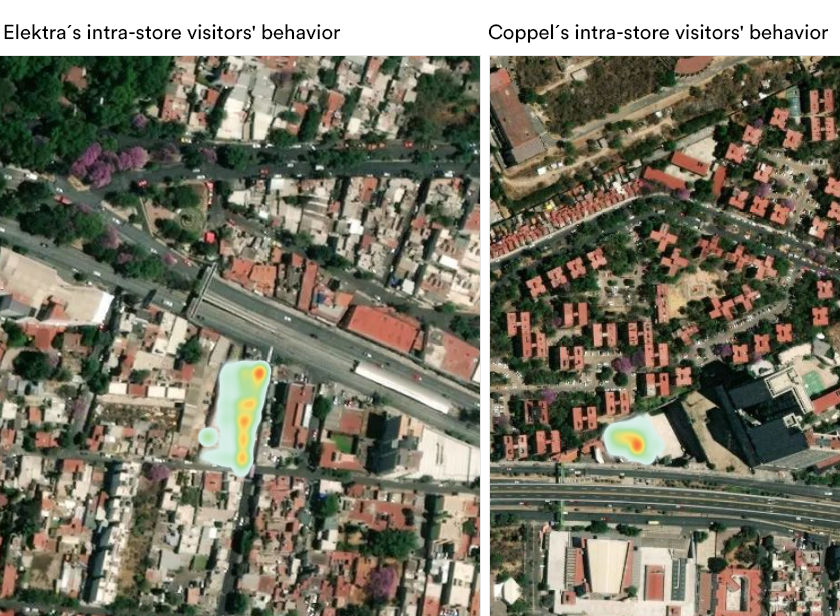
One of the aspects that differentiates mobility analysis from the conventional analysis is the ability to understand users’ movement within a store from a satellite perspective. This information can answer some questions like:
• Does the layout of my store allow a correct flow of my visitors?
• Where should I place a promotional or a specific product inside the store so more customers can see them?
• How can I reduce my check-out time?
• Where should I place customer service areas in the store?
As we can see in the graph, both stores have very marked “hot spots” In a more in-depth analysis, both brands could understand the factors involved in this behavior.
Access routes: How and from where do my visitors arrive at my store?
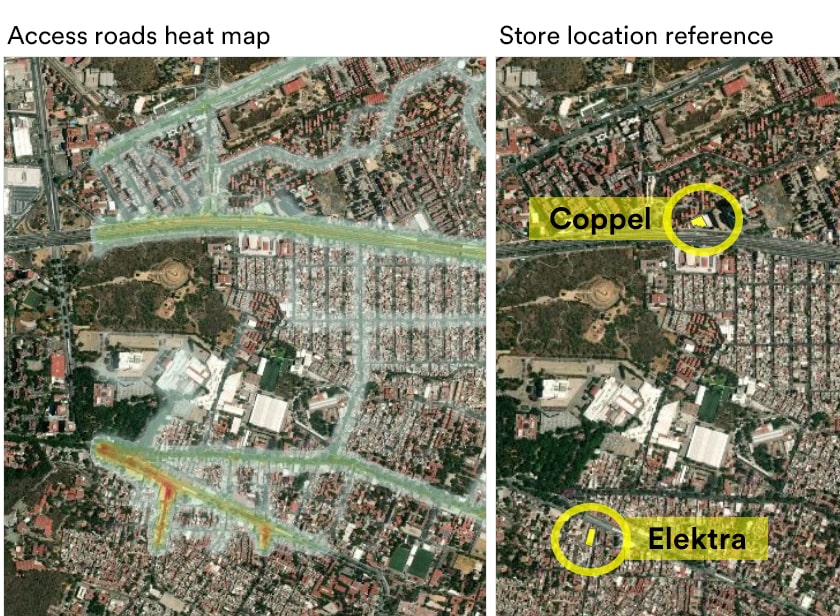
“Location, location, location,” said Ray Kroc. Undoubtedly, location is one of a retail store’s most critical success aspects. Mobility analysis allows us to identify the access roads that connect my store with my target market.
This information can answer some questions like:
• Is my store placed in the best location?
• Do the access roads around my store connect to my visitors’ locations?
• Is it easy for my visitor to find my store?
• Are any road problems preventing visitors from reaching my store?
Interestingly, although both stores are in the same area, the Elektra store is located on the road with a higher traffic concentration. This location gives Elektra a broader exposure to potential customers.
Visits volume: When do my visitors go to my store?
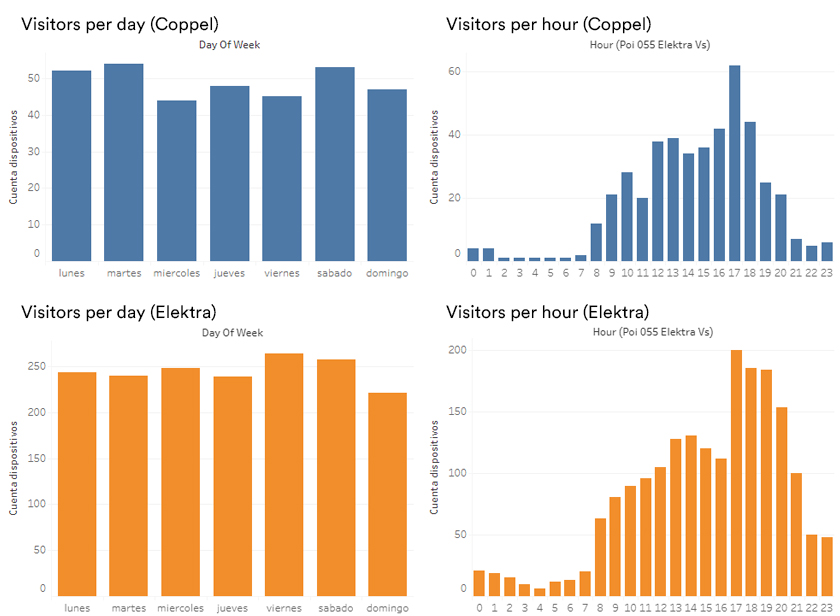
Managers and decision-makers need to know the volume of visits and behavior on different days and hours. We can make better decisions if we do the same analysis for the competition.
This information can answer some questions like:
• Which day and hour are more convenient for in-store marketing campaigns and promotions?
• What’s my volume of visits compared to my competition? How can I steal customers from my competition on their days with the highest volume of visits?
• How do my competition’s visitors behave?
• Which are my less profitable hours, and why?
As we can see, Elektra store shows a higher volume of visits compared to Coppel store. Likewise, the Elektra store shows a higher number of visits at night (For Coppel, it may be a reason to evaluate their offer looking for opportunities).
Visitors’ interests: What’re my visitors looking for, and what can I offer them?
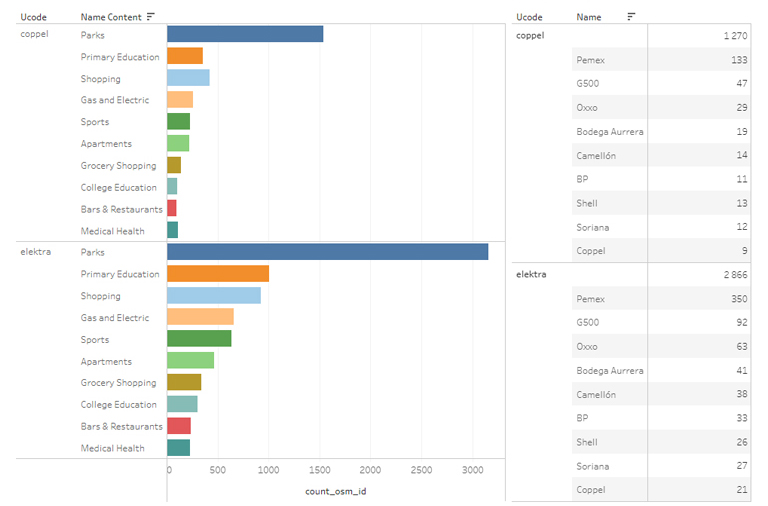
One advantage of carrying out mobility analysis is the detailed understanding of my visitors. This information can answer some questions like:
• Which kind of sites does my visitor prefers? Does my offer align with this behavior?
• What other brands do my visitor consumes? Could these brands be in my store?
• What’s the visitors’ profile that prefers going to my competition?
As we can see in the graph, both store visitors are interested in the “Sports” category. Both store managers could review their footwear and sportswear offers.
Another opportunity lies in the fact that many users visit gas stations. That means they own a car, so the question can be: Which car products need to be in the store?
Conclusions on the analysis
Mobility analytics generate well-supported information for crucial decisions. We can conclude that, although both stores are in the same area, some factors could benefit the Elektra store to obtain a higher volume of visits.
Want to know more about the benefits mobility analytics can bring to your business? You can talk to one of our experts. At PREDIK Data-Driven, we have more than 14 years of experience generating success stories for the most important companies in the world.

